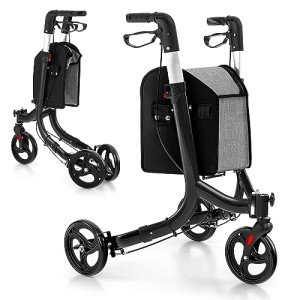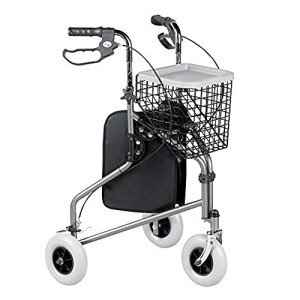Five Killer Quora Answers On Indoor Walker
The Rise of Indoor Walkers: A Comprehensive Guide
Indoor walkers have actually become a popular option for people looking for to maintain an active way of life within the boundaries of their homes. These versatile machines cater to a varied audience, from fitness lovers to those recovering from injuries. This article will look into the basics of indoor walkers, their benefits, types, and some factors to consider to keep in mind before buying one.
What is an Indoor Walker?
An indoor walker is a physical fitness device created to imitate walking without the need for outdoor space. Unlike conventional treadmills, which mainly concentrate on running and jogging, indoor walkers highlight a natural walking movement. They are geared up with features that promote stability, support, and convenience, making them ideal for a large range of users.
Why Choose an Indoor Walker?
Indoor walkers come with a myriad of benefits that attract users of all ages and physical fitness levels. A few of the main advantages consist of:
- Convenience: They can be utilized anytime, no matter weather condition conditions or time, making it simpler to fit workout into a busy schedule.
- Low Impact: Indoor walkers are designed to decrease pressure on joints, making them an outstanding choice for those with mobility concerns or joint issues.
- Space-Efficient: Many models are compact and easy to shop, fitting into little homes or homes with restricted space.
- Variety of Workouts: With adjustable speeds and strength levels, users can tailor their workouts to their fitness objectives.
Kinds Of Indoor Walkers
Indoor walkers been available in various designs, each dealing with different user requirements. Here are a few of the most common types:
| Type | Description | Perfect For |
|---|---|---|
| Manual Walkers | Operated by the user, moving the arms and legs in a walking movement. | Novices looking for a basic, cost-effective alternative. |
| Motorized Walkers | Equipped with a motor to manage speed and incline settings. | Those desiring a more flexible workout experience. |
| Under-desk Walkers | Compact makers that fit under desks, promoting walking while working. | People working from home seeking to remain active. |
| Recumbent Walkers | Enable users to stroll in a seated position, lowering tension on the body. | Older adults or those with mobility challenges. |
Key Features to Consider
When choosing the right indoor walker, a number of features can impact the general workout experience. Here are some vital considerations:
- Size and Portability: Ensure it fits your designated workout location and is easily movable if needed.
- Weight Capacity: Check the optimum weight limitation to guarantee safety throughout exercises.
- Adjustable Settings: Look for machines that offer adjustable speed and slope settings to customize your workouts.
- User-Friendly Display: Choose an indoor walker with an easy-to-read screen that tracks time, range, calories burned, and speed.
- Convenience Features: Consider cushioned manages, adjustable height, and a sturdy base for improved stability and comfort.
Health Benefits of Indoor Walking
Taking part in routine indoor walking can yield many health benefits:
- Enhanced Cardiovascular Health: Walking boosts heart rate and improves blood circulation, lowering the threat of cardiovascular disease.
- Weight Management: Regular walking, combined with a well balanced diet, aids in weight control and can contribute to weight-loss.
- Enhanced Mood: Physical activity releases endorphins, which can help in reducing sensations of anxiety and anxiety.
- Reinforced Muscles: Indoor walking reinforces the leg muscles and enhances general body coordination and balance.
Establishing a Walking Routine
To maximize the benefits of indoor walking, it’s necessary to establish a constant routine. Here are some tips to begin:

- Create a Schedule: Dedicate particular times throughout the week for walking. Go for at least 150 minutes of moderate aerobic activity weekly.
- Heat up and Cool Down: Always start with a 5-minute warm-up to prepare your body and surface with a cool-down to assist healing.
- Listen to Your Body: Pay attention to how you’re feeling. If you experience discomfort or pain, stop and examine your body’s requirements.
Regularly Asked Questions (FAQs)
Q: How much space do I require for an indoor walker?A: Most indoor walkers are compact and require a small footprint. It’s recommended to have at least 6 to 8 square feet readily available for a safe workout area. Q: Can indoor walkers be used by olderadults?A: Yes, indoor walkers are exceptional for older grownups as they provide low-impact exercise while promoting stability and mobility. Q: Do I need a fitness center membership if I have an indoor walker?A: No, having an indoor walker permits you to engage in cardio exercises at home, negating the requirement for a health club subscription for walking workouts. Q: How do I keep my indoor walker?A: Regularly look for loose screws, tidy the device after use, and follow the maker’s guidelines for particular upkeep schedules. Q: Are indoor walkers ideal for rehabilitation?A: Yes, lots of indoor walkers are developed to support rehab, especially for patients recuperating from surgery or injury. Constantly speak with a health care expert before beginning a new exercise program. Indoor walkers use a hassle-free and effective way to integrate physical activity into life. With their several health benefits, easy to use designs, and versatility, they are an excellent investment for anybody seeking to improve their
fitness levels in the convenience of their home. By comprehending the different types of indoor walkers, essential functions to consider, and the health advantages of walking, individuals can make educated choices that align with their fitness objectives. With devotion and the right devices, staying active has never ever been simpler.


